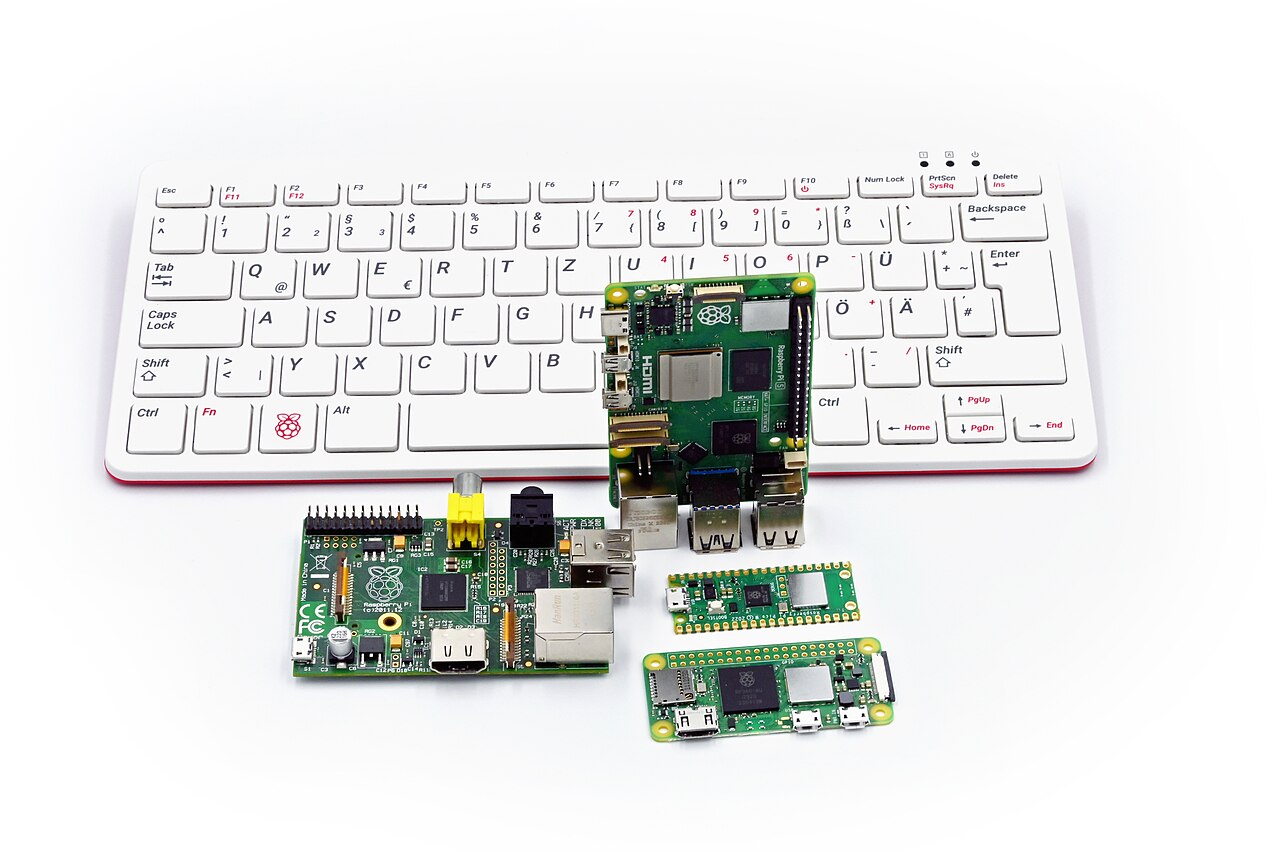Raspberry Pi
The Raspberry Pi is a small, affordable, and powerful single-board computer designed for education, experimentation, and prototyping in electronics and computing. Originally developed by the Raspberry Pi Foundation in 2012, its primary goal was to encourage learning and teaching of computer science and programming, especially in schools and developing countries. Over the years, the Raspberry Pi has evolved into a versatile tool used in a wide range of applications, from DIY projects and home automation to professional development and industrial systems.
At the heart of the Raspberry Pi is an ARM-based CPU, typically paired with RAM (varies depending on the model, from 512MB to 8GB), capable of running a variety of operating systems, with Raspberry Pi OS (formerly Raspbian) being the official and most widely used one. This Linux-based operating system provides a desktop environment for general computing tasks, software development, and multimedia applications. Raspberry Pi can also run other operating systems, such as Ubuntu, Windows 10 IoT Core, or specialized versions like LibreELEC for media centers.
The Raspberry Pi comes with a range of input/output ports for connecting peripherals. These include HDMI ports for video output, USB ports for connecting keyboards, mice, and other devices, and a GPIO (General Purpose Input/Output) header with 40 pins (on most models) for interfacing with external electronic components, such as sensors, motors, and LEDs. The GPIO pins allow the Raspberry Pi to interact with the physical world, making it ideal for robotics, home automation, and IoT applications. Additionally, the Pi includes Ethernet and Wi-Fi capabilities (on newer models), providing seamless internet connectivity, as well as Bluetooth for wireless communication.
With storage typically handled by a microSD card, which holds the operating system and data, the Raspberry Pi supports external storage devices via USB or network connections. The availability of camera modules, display screens, and additional accessories makes the Raspberry Pi a flexible platform for multimedia projects, including digital signage, security cameras, and home media centers.
One of the key strengths of the Raspberry Pi is its affordability, which allows individuals, schools, and hobbyists to access computing power at a low cost. The Raspberry Pi also has a strong community that provides extensive support, tutorials, and resources for users of all levels. It is widely used in robotics, home automation, IoT (Internet of Things) projects, education, and even as a media server or personal web server.
In summary, the Raspberry Pi is a powerful and affordable mini-computer that has revolutionized the way people learn, experiment, and create with technology. Its versatility, coupled with its vibrant community and educational resources, makes it a popular choice for makers, students, educators, and professionals alike.
At the heart of the Raspberry Pi is an ARM-based CPU, typically paired with RAM (varies depending on the model, from 512MB to 8GB), capable of running a variety of operating systems, with Raspberry Pi OS (formerly Raspbian) being the official and most widely used one. This Linux-based operating system provides a desktop environment for general computing tasks, software development, and multimedia applications. Raspberry Pi can also run other operating systems, such as Ubuntu, Windows 10 IoT Core, or specialized versions like LibreELEC for media centers.
The Raspberry Pi comes with a range of input/output ports for connecting peripherals. These include HDMI ports for video output, USB ports for connecting keyboards, mice, and other devices, and a GPIO (General Purpose Input/Output) header with 40 pins (on most models) for interfacing with external electronic components, such as sensors, motors, and LEDs. The GPIO pins allow the Raspberry Pi to interact with the physical world, making it ideal for robotics, home automation, and IoT applications. Additionally, the Pi includes Ethernet and Wi-Fi capabilities (on newer models), providing seamless internet connectivity, as well as Bluetooth for wireless communication.
With storage typically handled by a microSD card, which holds the operating system and data, the Raspberry Pi supports external storage devices via USB or network connections. The availability of camera modules, display screens, and additional accessories makes the Raspberry Pi a flexible platform for multimedia projects, including digital signage, security cameras, and home media centers.
One of the key strengths of the Raspberry Pi is its affordability, which allows individuals, schools, and hobbyists to access computing power at a low cost. The Raspberry Pi also has a strong community that provides extensive support, tutorials, and resources for users of all levels. It is widely used in robotics, home automation, IoT (Internet of Things) projects, education, and even as a media server or personal web server.
In summary, the Raspberry Pi is a powerful and affordable mini-computer that has revolutionized the way people learn, experiment, and create with technology. Its versatility, coupled with its vibrant community and educational resources, makes it a popular choice for makers, students, educators, and professionals alike.
